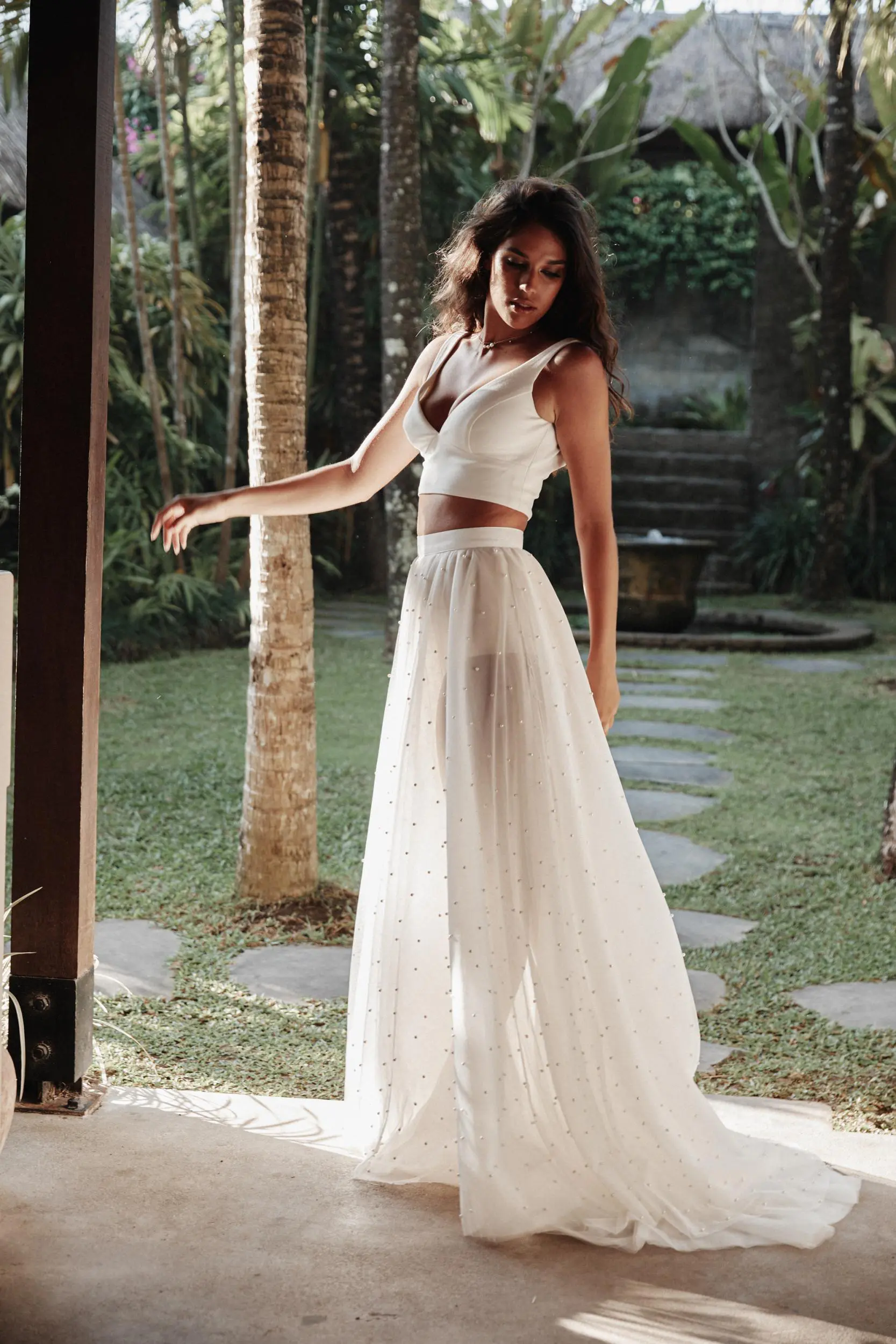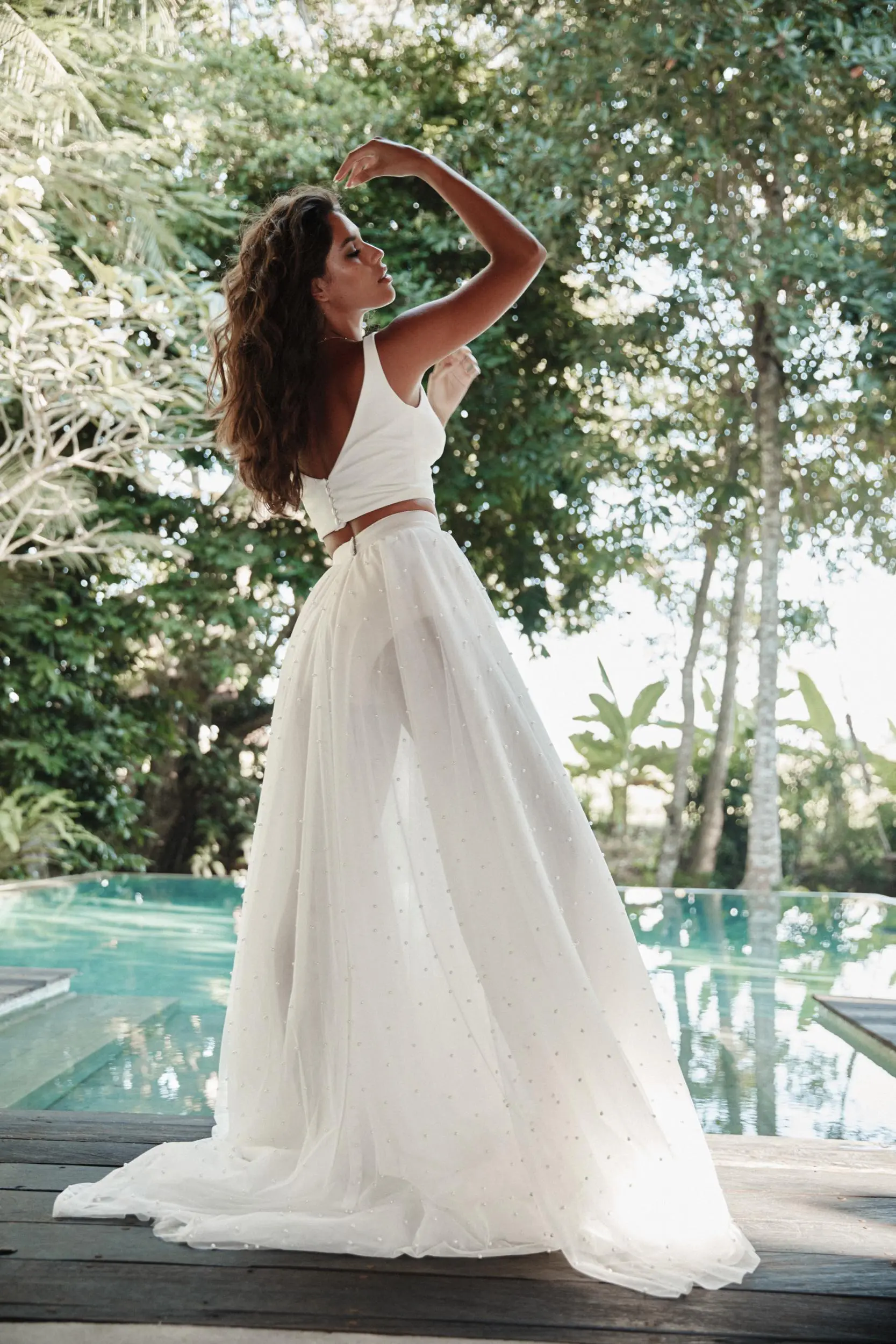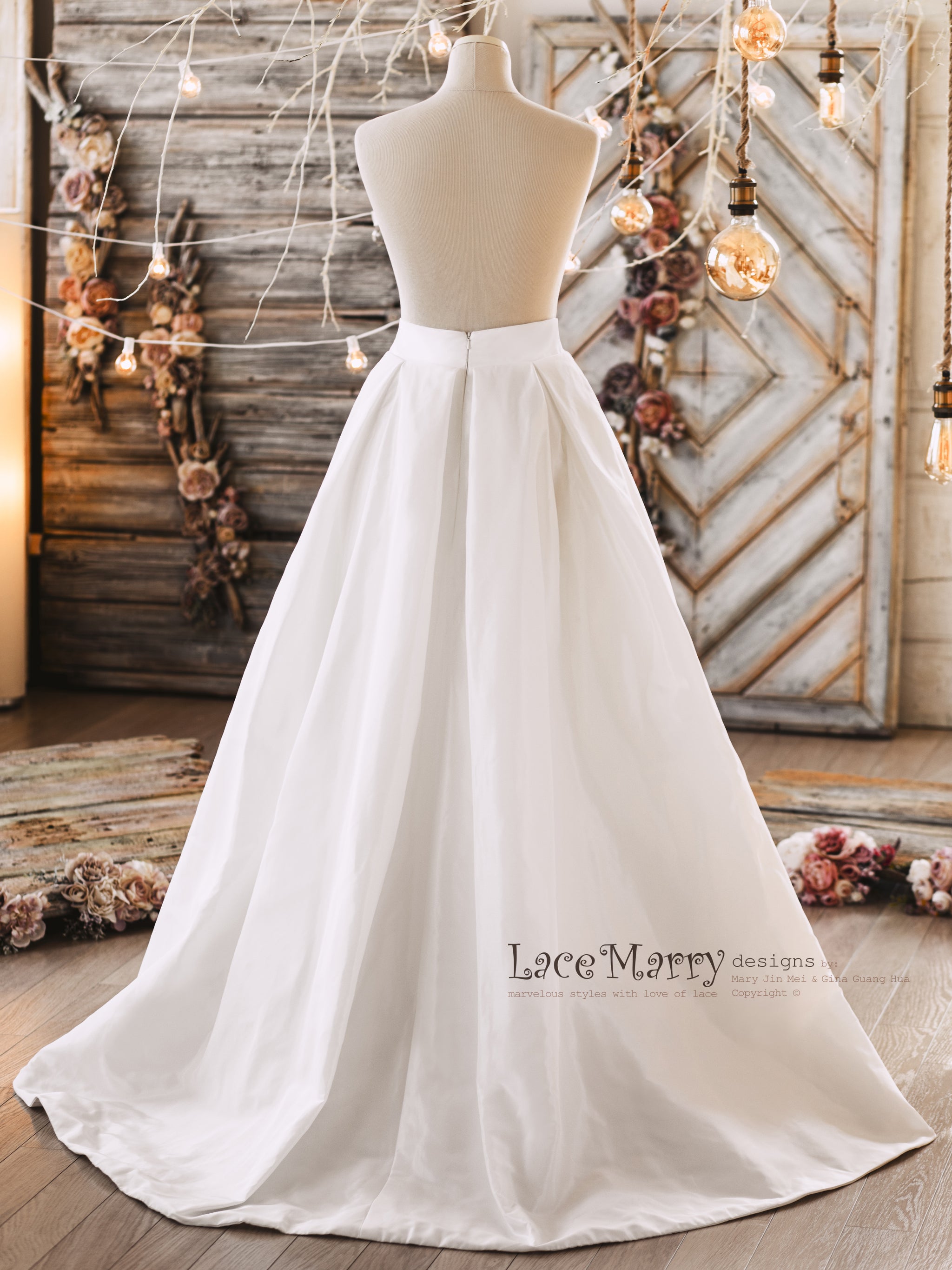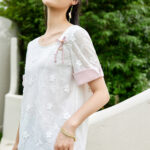How to Choose the Perfect Wedding Skirt for Your Big Day
Your wedding day is a momentous occasion, and the wedding skirt you choose plays a pivotal role in defining your look. It’s not just about fashion; it’s about expressing your personality, comfort, and the essence of your celebration. This guide will walk you through the key considerations, from silhouette and fabric to budget and professional tips, ensuring you find the ideal piece that makes you feel confident and radiant.
Understanding Silhouettes: The Foundation of Your Look
Selecting the right silhouette is the first step in choosing your wedding skirt. Silhouettes define the overall shape and style, influencing both aesthetics and comfort. Common options include A-line, ball gown, mermaid, sheath, and tea-length designs. An A-line skirt, for instance, flares gently from the waist, creating a timeless and universally flattering shape that suits most body types. According to fashion historians, the A-line design gained popularity in the 1950s, championed by designers like Christian Dior for its elegant simplicity. In contrast, a ball gown features a fitted bodice and a full, voluminous skirt, often associated with fairy-tale weddings. This style has been iconic in popular culture, such as in the film “Cinderella,” where the gown symbolizes transformation and dreams. Meanwhile, a mermaid silhouette hugs the body from the chest to the knees before flaring out, emphasizing curves and adding drama. This design is frequently seen on red carpets and in modern bridal collections, reflecting a blend of tradition and contemporary trends. When choosing, consider your body type and venue; for example, a beach wedding might call for a lighter, flowy sheath skirt, while a formal ballroom could accommodate a grand ball gown. Remember, the goal is to find a silhouette that makes you feel empowered and beautiful, not just one that follows trends.

Fabric Choices: Balancing Comfort and Elegance
The fabric of your wedding skirt significantly impacts its appearance, movement, and comfort. Common materials include lace, satin, tulle, chiffon, and silk, each offering unique qualities. Lace, for example, is often associated with vintage romance and intricacy; it has been a staple in bridal fashion since the Victorian era, as noted in historical texts from authoritative sources like the Fashion Institute of Technology. Lace can add texture and delicacy, making it perfect for bohemian or classic themes. Satin, on the other hand, provides a sleek and luxurious finish, ideal for formal weddings but potentially heavy in warmer climates. Scientific explanations from textile studies indicate that satin is a weave rather than a fiber, often made from silk or polyester, affecting its breathability and cost. Tulle is lightweight and airy, commonly used for voluminous skirts or overlays, evoking a sense of whimsy akin to styles seen in ballet performances like “Swan Lake.” Chiffon offers a flowing, ethereal quality, suitable for destination weddings where ease of movement is key. When selecting fabric, consider factors like season, venue, and personal comfort. For instance, a summer outdoor wedding might benefit from breathable cotton blends, while a winter ceremony could embrace heavier velvets. Additionally, advancements in sustainable fabrics, such as organic silk or recycled polyester, are gaining traction, supported by endorsements from eco-conscious celebrities on platforms like Twitter. Ultimately, your choice should align with your vision and practical needs, ensuring you feel at ease throughout your special day.

Incorporating Personal Style and Trends
Your wedding skirt should reflect your personal style while considering current trends, creating a balance that feels both modern and authentic. Trends in bridal fashion often draw inspiration from cultural movements, celebrity weddings, and historical revivals. For example, the minimalist trend, popularized by figures like Meghan Markle in her 2018 wedding, emphasizes clean lines and simplicity, resonating with those who prefer understated elegance. Conversely, maximalist designs with elaborate details and volumes have seen a resurgence, influenced by platforms like Pinterest and Instagram, where users share inspiration from sources such as Baidu Baike and Quora discussions. Incorporating elements like color accents—such as blush or ivory hues—can add uniqueness, as seen in traditional ceremonies across cultures, where non-white skirts symbolize joy and prosperity. Books like “The Bride’s Guide to Wedding Style” often highlight how personal anecdotes and cultural backgrounds shape choices, encouraging brides to infuse their heritage into their attire. When exploring styles, think about what makes you feel most like yourself; perhaps a tea-length skirt for a retro vibe or a sleek sheath for a contemporary twist. Remember, trends come and go, but your wedding photos will last a lifetime, so prioritize what genuinely resonates with you. Drawing from authoritative university literature on fashion psychology, it’s clear that clothing can influence confidence and emotions, making it essential to choose a skirt that aligns with your identity and the narrative of your day.

Practical Considerations: Budget, Alterations, and Comfort
Beyond aesthetics, practical aspects like budget, alterations, and day-long comfort are crucial in selecting your wedding skirt. Setting a realistic budget early on helps narrow down options; according to surveys from wedding websites like The Knot, the average cost of a bridal gown ranges from $1,000 to $3,000, but discounts and sample sales can offer savings of up to 50%. Many designers and retailers provide seasonal promotions, so timing your purchase during off-peak months can lead to significant discounts. Alterations are another key factor; even the most beautiful skirt may need adjustments for a perfect fit. Professional tailors recommend allocating 10-20% of the skirt’s cost for alterations, as improper fitting can affect comfort and appearance. Comfort is paramount—consider the weight of the fabric, ease of movement, and climate. For instance, a heavy ball gown might be stunning but cumbersome for dancing, while a lightweight chiffon skirt allows for freedom. Insights from YouTube videos by certified wedding planners emphasize testing the skirt by sitting, walking, and dancing during fittings. Additionally, think about practicality for post-ceremony events; some brides opt for convertible skirts that can be shortened for the reception, a trend supported by brands offering versatile designs. By addressing these practical elements, you ensure that your choice not only looks spectacular but also feels effortless, allowing you to fully enjoy every moment of your celebration.

Choosing the perfect wedding skirt is a journey that blends artistry with practicality, resulting in a piece that celebrates your uniqueness. Embrace the process, trust your instincts, and let your skirt be a reflection of the joy and love that define your big day.






